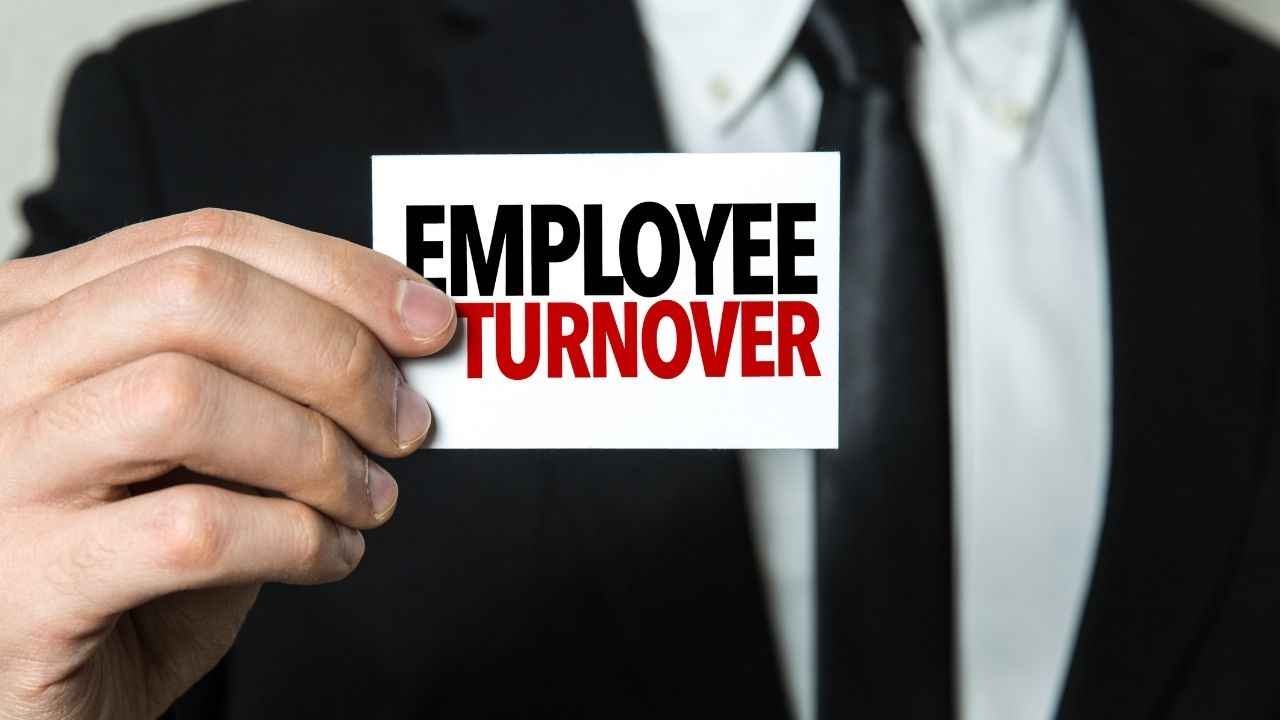Business
How to Fight Back Against High Employee Turnover

When building and growing an organization, few things are more frustrating or costly than high employee turnover. But with the right approach, you should be able to fight back, improve loyalty, and put your business back on the right path.
Common Causes of High Employee Turnover
Every business is unique, but high employee turnover can almost always be boiled down to a combination of the following factors:
- Overworked. Employees are fine working hard, but there’s a fine line between high expectations and unrealistic expectations. As employees become overworked, they become much more prone to burnout. This creates friction and produces challenges with engaging employees and keeping them on board with the company’s mission and goals.
- Toxic culture. The marks of a toxic culture include hostile interactions, lack of equality (in opportunity and/or pay), high stress levels, poor motivation, and poor morals. As the toxicity increases, so does the turnover rate.
- Boredom. Employees want to feel energized in their work. Too much boredom can result in disengagement and (eventually) turnover.
- Lack of opportunity. Employees want to know that they have the opportunity to get promotions and pay raises. If they don’t see other employees moving up the corporate ladder, they’ll become discouraged and look for better opportunities elsewhere.
- Bad boss. There’s a saying that says, “People don’t leave their jobs, they leave their managers.” If you have a bad boss who is incomptenent, rude, overbearing, or insensitive, it’s going to hurt your cause. Employees might put up with it for a few months, but it’ll eventually push them out.
Strategic Ways to Reduce Turnover
There are plenty of legitimate reasons why employees leave – including a better offer, starting their own business, or pivoting careers. And there really isn’t much you can do about these factors. But then there are controllable elements. You’re in control over the factors above. Now’s the time to strategically change the way you approach your business. Here are some helpful tips:
- Develop a Better Employee Experience
Whether you’ve documented it or not, your company has an employee experience. It’s essentially everything a worker learns, does, feels, or sees at each stage of their employment lifecycle. This includes five key phases: recruitment, onboarding, development, retention, and exit.
If you want to boost retention by reducing turnover, you have to take employee experience seriously. And by focusing on each of the five stages, you’re able to tailor the experience without compromising on the big picture. In other words, you can keep a consistent culture while still providing a unique experience to employees who are just now being onboarded and those who have been on the payroll for years.
- Hire the Right People
You can do yourself a massive favor by hiring people who are a good cultural fit for your organization. (Otherwise you’ll face an uphill battle from the very start.) This is accomplished by clearly defining the role – both to the candidate and to your hiring team – and to implement a detailed due diligence process.
- Terminate Toxic People
Don’t let toxic people stick around. The longer a toxic employee is in your business, the more likely it is that their behavior becomes contagious. Terminate people who don’t fit as quickly as possible. Not only does this eliminate the toxic source, but it also shows your remaining employees that you don’t put up with that kind of behavior.
- Go Beyond Money
Contrary to popular belief, money is not the best motivator. While a pay raise or bonus can work, its effects are usually short-lived. Within a few weeks or months, the employee will begin looking for the next raise.
To motivate employees and make them loyal to the organization, you have to go beyond money. Find out what it is your employees really want. Good motivators include status, autonomy, flexibility, and verbal affirmation.
- Create a Clear Sense of Identity
This tip goes hand in hand with the idea of developing a better employee experience. The goal is to establish a clear company identity so that employees have something tangible to hold onto.
In other words, if asked the question, Why do you like working for our company?, every employee should be able to articulate what it is that keeps them loyal to the business. The exact phraseology might vary, but most of the answers should land near the same target.
Build a Sustainable Business
There’s a lot that goes into building successful and sustainable businesses. But it’s nearly impossible to scale if you don’t have a stable team of people who are committed to your cause. Having said that, now’s the time to reevaluate where you stand and build a business that puts people first. In doing so, you’ll establish the foundational cornerstones needed to grow over the next few years and decades.
Business
Spynn’s PR Playbook for Startups Turning Funding into Market Leadership

Byline: Jennyfer Ann Valencia
The recent funding boom in India, where startups raised over $428 million between March 10 and March 15, 2025, reinforces the critical role of public relations (PR) in securing investor confidence and enhancing visibility. As competition intensifies, effective PR strategies help startups differentiate themselves and build a strong market presence.
Spynn, a PR agency for startups specializing in securing top-tier media coverage, enables startups to craft compelling narratives that attract investors and maintain a positive brand image.
The Role of PR in Startup Funding
A recent survey conducted by Spynn found that startups with a strong PR strategy are significantly more likely to secure funding rounds than those without. According to the research, nearly 70% of investors say media visibility and brand credibility helped their decision-making process. This highlights PR’s direct impact on a startup’s ability to attract investment.
PR helps startups articulate their value to investors by securing media coverage and highlighting their growth potential. High-profile placements lend credibility and set up startups’ potential, making them more attractive to investors. For instance, a well-publicized success story from a startup like Zolve, one of the top funding recipients, can drive further investor interest and strengthen its brand.
India’s funding surge spans sectors including Batterytech, Edtech, Gaming, Apparel, Aerospace, Manufacturing, Fintech, Energy, and Travel. While this presents opportunities, it also brings scrutiny. Startups must manage their reputations effectively, ensuring consistency in their messaging across media platforms. As a PR agency for startups, Spynn’s expertise in reputation management helps businesses navigate these challenges by maintaining a cohesive brand identity and reinforcing investor trust.
Establishing Credibility Through Media Placements
Research from Spynn also revealed that startups that get featured on Forbes, Business Insider, and other top-tier publications experience a 50% increase in inbound investor inquiries within six months. This shows the value of securing strategic media placements to reinforce credibility and market positioning.
Strong media coverage bolsters a startup’s credibility, reinforcing its market positioning and investor confidence. Spynn ensures startups secure coverage in authoritative outlets, helping them establish themselves as thought leaders. Beyond initial publicity, Spynn focuses on building long-term relationships with media, ensuring sustained visibility and brand consistency.
Spynn’s CEO, Matteo Ferretti, emphasizes the role of storytelling, “Effective PR is about coverage and creating narratives that resonate with audiences. Startups must highlight their unique value and demonstrate how they solve real-world problems.”
PR for Growth and Global Expansion
Spynn’s data indicates that startups leveraging international PR strategies are twice as likely to successfully attract foreign investors and expand into new markets. Media coverage tailored for global audiences enhances cross-border recognition and facilitates partnerships, making PR an essential tool for growth beyond domestic markets.
As Indian startups scale, a strong PR strategy facilitates global recognition. Spynn’s international media reach helps startups gain traction in new markets and attract foreign investors. This is especially crucial for sectors like Fintech and Edtech, where global expansion is key to success.
A well-executed PR strategy strengthens a startup’s digital footprint, ensuring a consistent and engaging presence across platforms. Matteo Ferretti highlights the importance of balance, “A successful PR approach integrates both digital and traditional media to maximize impact and audience engagement.“
Ethical Considerations and Future Trends
Transparency and ethical storytelling are vital in PR. Startups must ensure authenticity in their messaging to build lasting trust. Spynn upholds ethical PR practices that align with principles of sustainability and integrity.
Indian startups must adapt to evolving PR trends, including AI-driven outreach, digital media dominance, and deeper media relationships. As competition grows, startups that take advantage of PR will have a better standing for long-term success.
Spynn’s PR strategies equip Indian startups with the tools to navigate funding surges, enhance credibility, and drive growth. By securing impactful media coverage and managing reputation effectively, startups can strengthen investor confidence and expand their market presence. As India’s startup ecosystem evolves, PR remains an indispensable asset for sustained success.
-

 Tech4 years ago
Tech4 years agoEffuel Reviews (2021) – Effuel ECO OBD2 Saves Fuel, and Reduce Gas Cost? Effuel Customer Reviews
-

 Tech6 years ago
Tech6 years agoBosch Power Tools India Launches ‘Cordless Matlab Bosch’ Campaign to Demonstrate the Power of Cordless
-

 Lifestyle6 years ago
Lifestyle6 years agoCatholic Cases App brings Church’s Moral Teachings to Androids and iPhones
-

 Lifestyle4 years ago
Lifestyle4 years agoEast Side Hype x Billionaire Boys Club. Hottest New Streetwear Releases in Utah.
-

 Tech6 years ago
Tech6 years agoCloud Buyers & Investors to Profit in the Future
-

 Lifestyle5 years ago
Lifestyle5 years agoThe Midas of Cosmetic Dermatology: Dr. Simon Ourian
-

 Health6 years ago
Health6 years agoCBDistillery Review: Is it a scam?
-

 Entertainment6 years ago
Entertainment6 years agoAvengers Endgame now Available on 123Movies for Download & Streaming for Free
